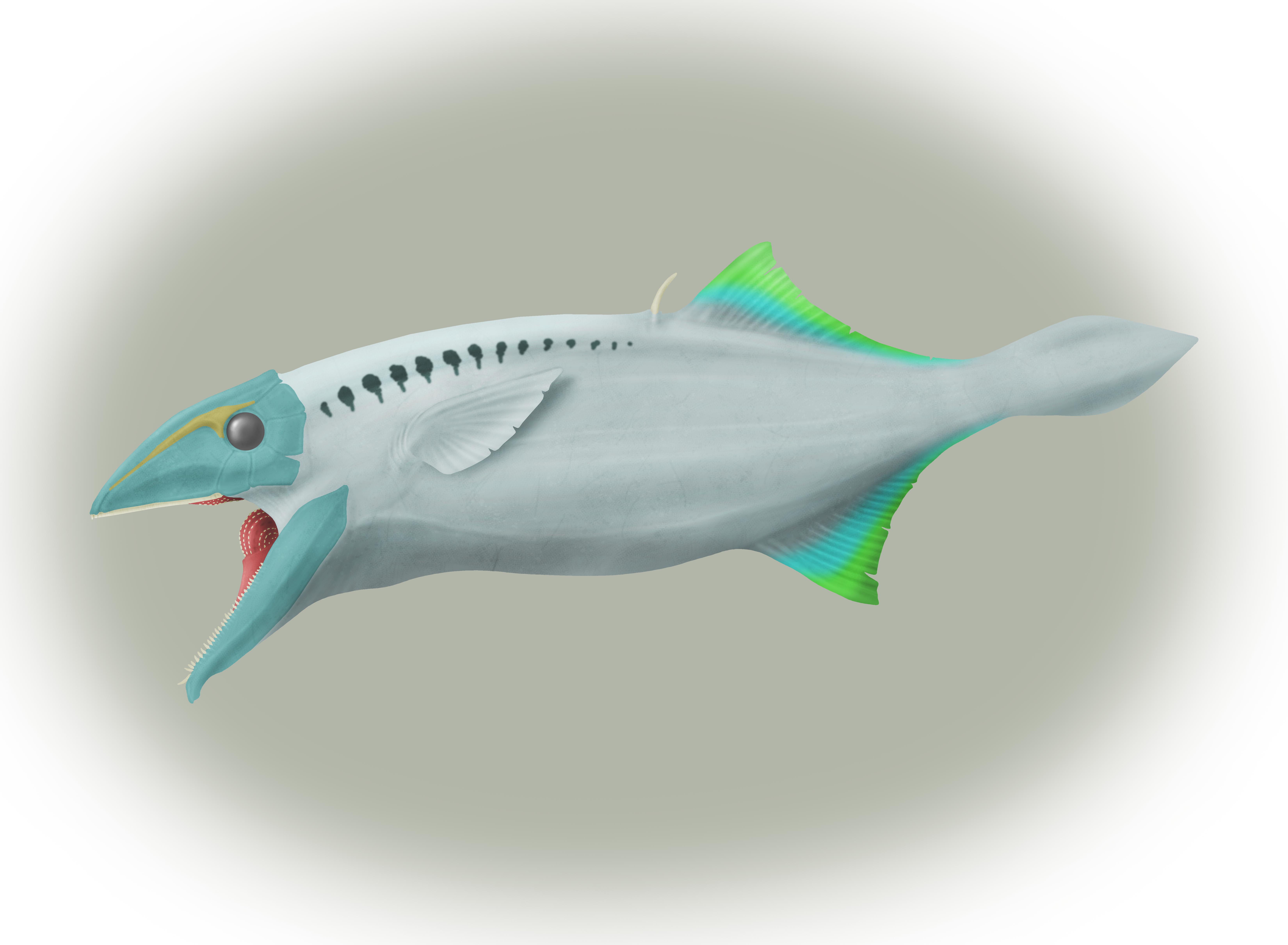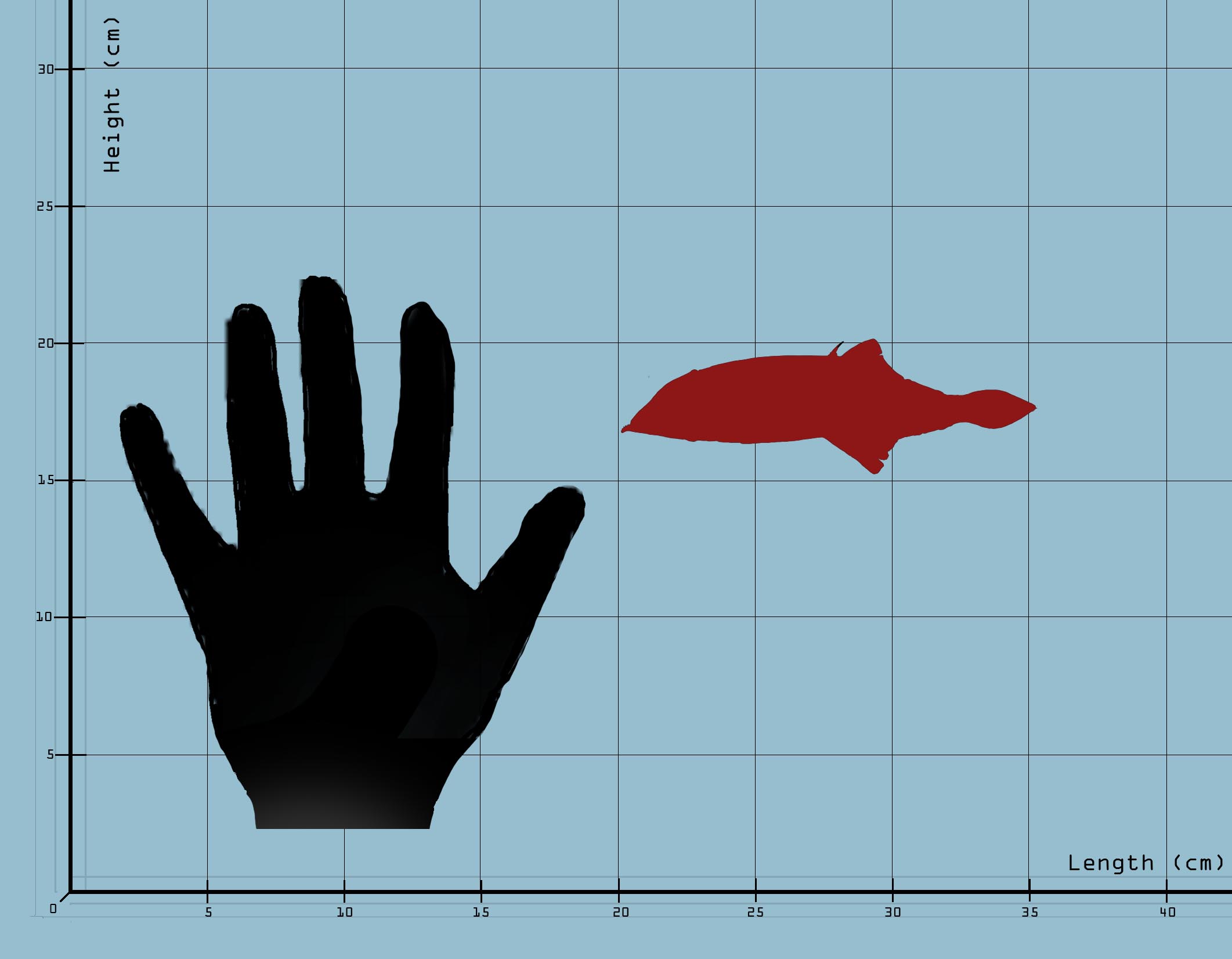Common Northling
Cinerichthys artica lives in giant schools of millions of specimens in the arctic ocean of Nijin-Konai.
They have adopted a similiar lifestyle to that of herrings and sardines on Earth and put their strenght in numbers to defend from their natural predators.
Although they seem harmless, to humans this fish is highly poisonous and thus not edible.
The animal’s poison is produced by some internal glands used in the production of an enzyme for the digestion of the arctic algae, which would normally be inedible by the creature.
The animal’s population saw a drastic rise during the 2470s, possibly due to pollution, as apparently the arctic algae could feed and use the archaic plastics used during those years as a growing substrate.
However, since then, the populations returned to normal rates if not reduced by salt pollution from unrefined waste waters that follow the currents up north to its habitat.
Basic Information
Anatomy
Head slightly elongated; jaw extending frontally outside of the maxillary boundary.
Body tapered in shape.
Dorsal fin extending caudally to the base of the Gill fan.
Anal I extending to the base of the Gill fan.
Natal aculeus kept to adulthood and posteriorly moved to the base of the dorsal fin.
Genetics and Reproduction
The species reproduces in correspondance to the flowering of the arctic algae they feed on.
Male and female of the species will enter heat simultaneously, the mating selection process is quick: a brief exchange between two males will occur in which they will flirt with the same female together, showing off the coloration of fins and cranial armor; the female will then choose the male with the more vibrant colors.
Mating takes an average of one minute; the male will insert the parapenis inside the female's duct, manually fertilizing the egg sacs one by one; The male will not detatch from the female until the eggs hatch inside her, the almost removed parapenis will close the duct and insulate the eggs from the colder water outside.
The eggs take two days to hatch; when born, the spawn will stay inside the mother's ducts for another two days, feeding off of a specialized substance emitted by the male's parapenis (unique to this family), which will give the newborns the enzymes needed to digest the arctic algae along with the precious nutrients needed by the animals to survive in the cold waters outside.
Once the youngs are out of the female, they will unite with the shoal and be indipendant.
Growth Rate & Stages
Ontogenesis is important in the species; at birth the spawn will be millimetric in size, with a small and blunted natal aculeus.
After two days of life they'll start to become bigger and the aculeus will start moving to the back of the body.
At six days of age they'll be full adults; the bright fin colors depend on how rich is their diet.
Ecology and Habitats
They are Epipelagic inhabitants of the oceanic zone, found between 0 and 200 m deep.
They live in the first section of the arctic, where the ice is loose and the algae they feed upon can grow.
Dietary Needs and Habits
They feed on a particular family of poisonous algae that grows on the underside of thin ice.
This arctic algae wouldn't be edible to them if not for a particular enzyme they produce, which makes them poisonous to humans.
Biological Cycle
Sexual maturity at four days old, they never become sterile.
Long periods of hybernation during winter season, when algae go in cryostasis.
Additional Information
Social Structure
They are highly social animals, living in schools of millions of specimens.
Social interactions between the group are especially visible during resting times, when they have time to socialize.
Uses, Products & Exploitation
Not many uses for humans.
Famously used by the Neo-Union's Pollution Deniers campaign, which pointed out how the population saw a groth spurt after plastics came into the environment, "proving" how different life reacted to pollution on the planet.
Geographic Origin and Distribution
southern section of the Arctic Ocean
Perception and Sensory Capabilities
They rely heavily on eyesight.
Scientific Name
Eoichthyia; Tartarosomnia; Rotunducephalidae; Gladiopinneoidea; Quadratocephaloidea; Cinerichthydae; Cinerichthys; C. artica
Lifespan
2 years
Conservation Status
NEAR THREATENED: While no actions have been taken to protect this species as of now, many environmentalist organizations are pressing the governments to do so; the recent population decline could soon become problematic for the whole arctic ecosystems it lives in.
Population trend: DECLINE
Average Weight
20 to 100 gr
Body Tint, Colouring and Marking
Bluish-grey body with bright azure cranial armor and bright yellow Lacrimal plate.
Dorsal and Anal I fins going from bright azure to light green.
Remove these ads. Join the Worldbuilders Guild











Comments